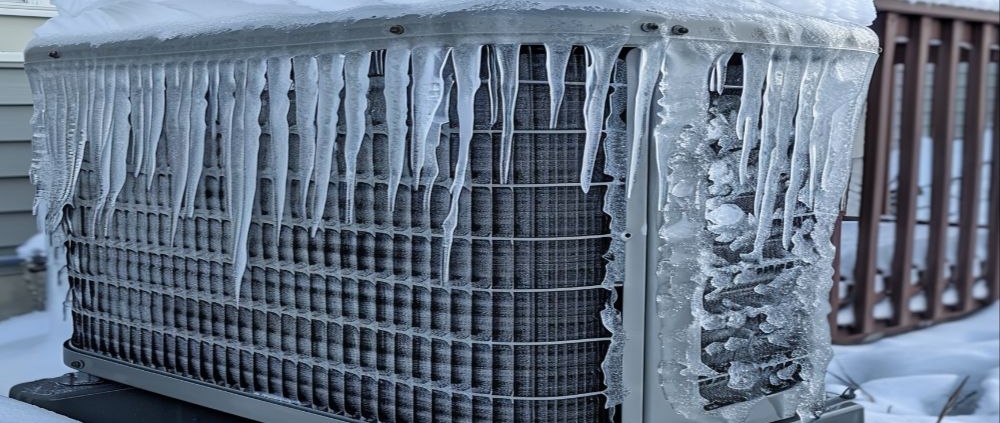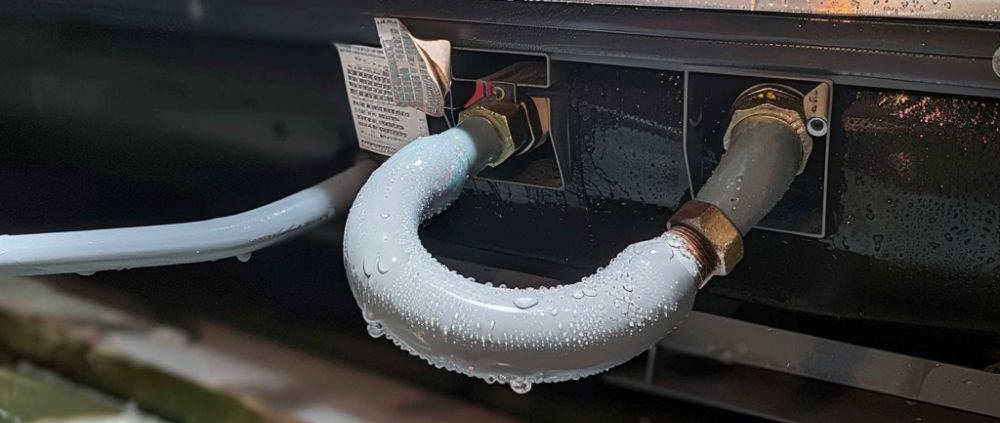How to Defrost Your AC Unit
Summer is here, and the last thing you want is for your air conditioning unit to freeze up on a scorching day. When your AC unit freezes, it can reduce airflow and discomfort in your home. But fear not—in this guide, we’ll walk you through the steps to defrost your AC unit and prevent future freezes.
Introduction
Before we delve into the solution, let’s understand what an AC unit is and why it freezes up. An air conditioning unit removes heat and moisture, providing cool air to maintain a comfortable indoor environment. However, when specific issues arise, such as restricted airflow or low refrigerant levels, the humidity in the air can freeze on the unit’s coils, leading to a frozen AC unit.
Signs of a Frozen AC Unit
How do you know if your AC unit is frozen? Here are some common signs to look out for:
- Reduced airflow: You may notice that the airflow coming from your vents is weaker than usual.
- Ice buildup on the unit: Check the outdoor unit for ice accumulation, especially on the coils.
- Warm air blowing from vents: Despite the unit running, you may feel warm air instead of cool air coming from the vents.
Causes of a Frozen AC Unit
Understanding the root causes of a frozen AC unit can help you prevent it from happening in the future. Some common causes include:
- Low refrigerant levels: Insufficient refrigerant can cause the coils to become too cold and freeze the moisture in the air.
- Dirty air filters: Dirty filters restrict airflow, causing the coils to freeze.
- Blocked air vents: Blocked vents prevent proper airflow, leading to ice buildup on the unit.
- Faulty thermostat: A malfunctioning thermostat can cause the AC unit to run continuously, leading to freezing.
How to Defrost an AC Unit
Now that you’ve identified a frozen AC unit, it’s time to defrost it. Here’s what you need to do:
- Turn off the AC: Switch the air conditioning system to prevent further damage.
- Let the ice melt naturally: Allow the ice on the unit to thaw naturally.
- Check for blocked vents: Ensure that all vents are clear of obstructions to allow proper airflow.
- Change the air filter: Replace dirty air filters with clean ones to improve airflow.
- Inspect refrigerant levels: If you suspect low refrigerant levels, contact a professional to recharge the system.
- Test the thermostat: Ensure that the thermostat is functioning correctly and set to the appropriate temperature.
Preventing Future Freezes
To avoid future instances of a frozen AC unit, follow these preventive measures:
- Regular maintenance: Schedule annual maintenance checks to identify and address potential issues.
- Cleaning air filters: Regularly clean or replace air filters to maintain optimal airflow.
- Keeping vents unobstructed: Ensure that furniture or other objects do not block air vents, allowing proper airflow.
Conclusion
Dealing with a frozen AC unit can be frustrating, but with the proper knowledge and preventive measures, you can keep your air conditioning system running smoothly all summer. Understanding the causes of a frozen unit and taking proactive steps to defrost it and prevent future freezes allows you to enjoy relaxed, comfortable indoor air without interruption.
FAQs
- How long does it take to defrost an AC unit?
- The time it takes to defrost an AC unit can vary depending on the severity of the freeze and environmental conditions. In general, it may take several hours to thaw completely.
- Can I speed up the defrosting process?
- While it’s tempting to accelerate the thawing process, avoid using sharp objects or hot water, as they can damage the unit. It’s best to allow the ice to melt naturally.
- Do I need to call a professional to defrost my AC unit?
- In most cases, you can defrost your AC unit by following the steps outlined in this guide. However, if you encounter any difficulties or suspect underlying issues, it’s best to seek professional help.
- How often should I replace my air filters?
- It’s recommended to check your air filters monthly and replace them every 1-3 months, depending on usage and the type of filter.
- What should I do if my AC unit keeps freezing up?
- If your AC unit continues to freeze despite regular maintenance, it must be inspected by a professional HVAC technician to identify and address any underlying issues.
How to Clean Coils on AC Unit Inside: A Comprehensive Guide
Introduction
In the scorching heat of summer, your air conditioning unit becomes your best friend, ensuring you stay relaxed and comfortable indoors. However, regular maintenance is crucial to keep your AC functioning efficiently. One essential aspect of AC maintenance is cleaning the coils, particularly those inside the unit. In this guide, we’ll walk you through the steps to effectively clean the coils on your AC unit, helping you ensure optimal performance and prolong its lifespan.
Understanding the Importance of Clean Coils
H1: Why Clean Coils Matter
Dirty coils can significantly reduce the efficiency of your air conditioning unit, leading to higher energy bills and potential damage to the system.
H2: Impact on Energy Efficiency
When coils are covered in dust, dirt, or debris, they can’t effectively transfer heat. This forces the system to work harder to cool your home, consuming more energy.
H2: Prevention of System Breakdowns
Regular coil cleaning prevents the buildup of grime that can cause corrosion or blockages, potentially leading to costly repairs or system failures.
Signs That Your Coils Need Cleaning
H1: Reduced Cooling Performance
If your AC isn’t cooling your home as effectively as it used to, dirty coils could be the culprit.
H2: Increased Energy Bills
A sudden spike in your energy bills without a corresponding increase in usage could indicate that your AC is working harder due to dirty coils.
H2: Ice Formation on Coils
Ice buildup on the coils is a clear sign of restricted airflow, often caused by dirt and debris accumulation.
How to Clean Coils on AC Unit Inside
H1: Safety Precautions
Before you begin, ensure the power to your AC unit is turned off to prevent any accidents. Additionally, wear gloves and protective eyewear to shield yourself from cleaning chemicals and debris.
H1: Gather the Necessary Tools
You’ll need a soft brush, a vacuum cleaner with a soft brush attachment, a fin comb, a coil cleaner solution, and a spray bottle.
H1: Access the Coils
Depending on your AC unit’s design, you may need to remove a panel or access cover to reach the coils. Refer to your manufacturer’s instructions for guidance.
H1: Brush Away Surface Debris
Using the soft brush, gently remove any visible dust or debris from the coils. Be careful not to bend the delicate fins.
H1: Vacuum the Coils
Using the vacuum cleaner with the soft brush attachment, carefully vacuum the coils to remove finer particles and debris.
H1: Apply Coil Cleaner
Dilute the coil cleaner solution per the manufacturer’s instructions and spray it onto the coils. Allow it to sit for a few minutes to loosen stubborn dirt and grime.
H1: Rinse the Coils
Rinse the coils thoroughly to remove the cleaner and dislodged dirt using a spray bottle filled with water.
H1: Straighten Bent Fins
If you notice any bent fins during the cleaning process, use a fin comb to gently straighten them out, ensuring optimal airflow.
H1: Allow the Coils to Dry
Once cleaned, allow the coils to air dry before restoring power to the AC unit.
Conclusion
Regular maintenance, including cleaning the coils inside your AC unit, is essential for ensuring efficient operation and prolonging its lifespan. By following the steps outlined in this guide, you can keep your AC running smoothly, save energy, and avoid costly repairs.
FAQs (Frequently Asked Questions)
Q1: How often should I clean the coils on my AC unit?
A1: The coils should be cleaned at least once a year, preferably before the start of the cooling season.
Q2: Can I use household cleaners to clean the coils?
A2: To avoid damaging the coils or other components, it’s best to use coil cleaner solutions specifically designed for AC systems.
Q3: What if I notice mold or mildew on the coils?
A3: If mold or mildew is present, use a solution of water and mild detergent to clean the coils thoroughly. Rinse well and allow to dry completely.
Q4: Can I clean the coils or hire a professional?
A4: While cleaning the coils is a DIY task, hiring a professional HVAC technician is always best if you need clarification or are uncomfortable with the process.
Q5: Will cleaning the coils improve my AC’s cooling performance?
A5: Clean coils allow for better heat transfer, resulting in improved cooling performance and energy efficiency.
How Much Water Should Be in AC Drip Pan
IntroductionAir conditioning systems are crucial to indoor comfort, especially during the hot summer. However, many homeowners need to pay more attention to adequately maintaining their AC units, including monitoring the water level in the drip pan. Understanding how much water should be in the AC drip pan ensures optimal performance and prevents potential issues.Ideal Water Level in AC Drip PanThe ideal water level in the AC drip pan depends on several factors, including the size of the unit, humidity levels, and the efficiency of the condensate removal system. The water level should generally be sufficient to facilitate the drainage of condensate generated during the cooling process. However, it should not exceed the drip pan’s capacity, as this can lead to overflow and water damage.Maintaining the proper water level is crucial for preventing mold and bacteria growth, which thrive in moist environments. Additionally, an excessively high water level can result in water leakage, damaging the AC unit and surrounding areas.How to Check Water Level in AC Drip PanChecking the water level in the AC drip pan is a simple process that can be done regularly as part of routine maintenance. Begin by locating the drip pan beneath the evaporator coil or air handler. Use a flashlight to inspect the interior of the drip pan and assess the water level.Ideally, the water level should be half an inch deep. If the water level exceeds this threshold, it may indicate a problem with the condensate removal system or excessive humidity. Conversely, if the drip pan is dry, it could indicate a blockage or malfunction in the system.Importance of Proper Water ManagementProper water management in the AC drip pan is essential for maintaining indoor air quality and preventing structural damage to the home. Excess water in the drip pan can create an environment conducive to mold and bacteria growth, which can compromise indoor air quality and pose health risks to occupants.Furthermore, water leakage from the drip pan can damage the AC unit, flooring, and surrounding structures. Over time, this can lead to costly repairs and maintenance expenses. By managing the water level in the drip pan effectively, homeowners can mitigate these risks and ensure the longevity and performance of their AC system.Methods to Maintain Optimal Water LevelThere are several methods homeowners can use to maintain the optimal water level in the AC drip pan. Regular inspection and cleaning of the drip pan can help prevent clogs and blockages that impede proper drainage. Additionally, installing a condensate pump or overflow switch can provide added protection against water overflow and leakage.By implementing these proactive measures, homeowners can effectively manage the water level in the AC drip pan and prevent potential issues associated with improper drainage. Investing time and effort into regular maintenance can save money on repairs and prolong the lifespan of the AC system.FAQs
What causes water to accumulate in the AC drip pan?Water accumulation in the AC drip pan is primarily caused by condensation from the cooling process. However, high humidity levels and clogged drain lines can exacerbate the issue.Can I remove excess water from the drip pan myself?Excess water can be removed from the drip pan using a wet/dry vacuum or manually draining it using a sponge or towel. However, if water accumulation is persistent, it may indicate an underlying issue that requires professional attention.Is it normal for the drip pan to be dry?While some moisture level is expected in the drip pan due to condensation, it should not be scorched. A dry drip pan may indicate a blockage in the condensate drain line or a malfunction in the AC system.How often should I check the water level in the drip pan?It is recommended to check the water level in the drip pan at least once a month, especially during periods of heavy AC usage. Additionally, conducting visual inspections of the drip pan during routine maintenance checks can help identify potential issues early on.Can a high water level in the drip pan affect AC performance?A high water level in the drip pan can affect AC performance by impeding proper drainage and causing water leakage. This can lead to reduced cooling efficiency and potential damage to the AC unit and surrounding structures.





